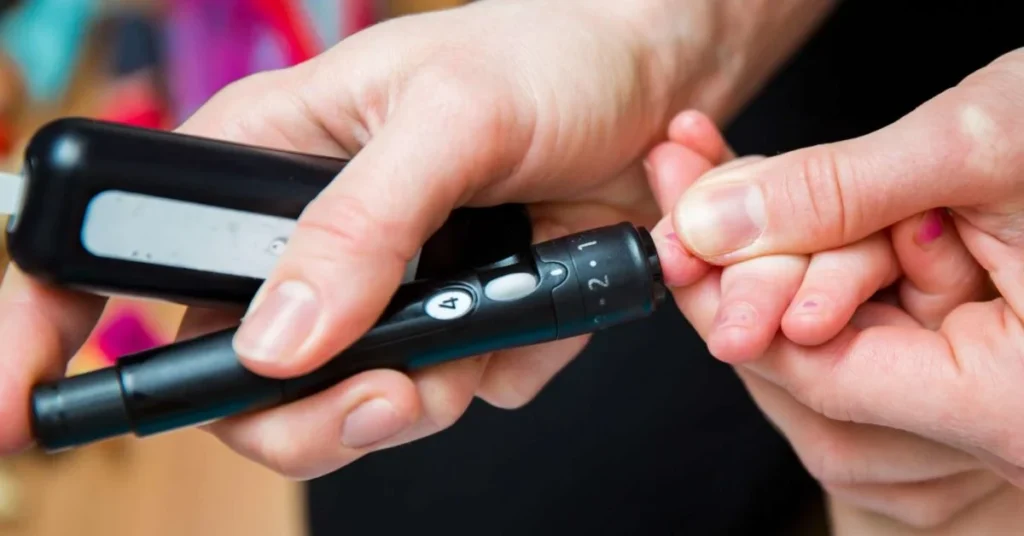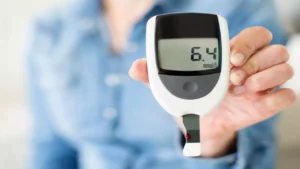Diabetes Insipidus (DI) is a rare disorder characterized by excessive thirst and excretion of large amounts of urine. Unlike Diabetes Mellitus, which involves issues with insulin production or utilization, DI is caused by a deficiency of antidiuretic hormone (ADH), also known as vasopressin. In this comprehensive guide, we’ll delve into the causes, symptoms, diagnosis, and treatment options for Diabetes Insipidus.
Contents
What is Diabetes Insipidus?

Diabetes Insipidus is a condition that disrupts the body’s ability to properly regulate water balance. This disorder affects the kidneys’ ability to concentrate urine, leading to the excretion of large volumes of dilute urine. The primary hormone involved in regulating water balance is antidiuretic hormone (ADH), which is produced in the hypothalamus and stored in the pituitary gland.
Causes of Diabetes Insipidus
DI can be classified into central DI and nephrogenic DI, each with its own set of causes:
- Central Diabetes Insipidus (CDI):
- CDI occurs when ADH production is deficient or released from the hypothalamus or pituitary gland.
- Causes of CDI may include head trauma, tumors of the pituitary gland or hypothalamus, inflammation, or certain genetic conditions.
- Nephrogenic Diabetes Insipidus (NDI):
- NDI occurs when the kidneys fail to respond to ADH, leading to decreased water reabsorption.
- Causes of NDI may include genetic mutations, kidney disorders, certain medications (such as lithium), and electrolyte imbalances.
Symptoms of Diabetes Insipidus
The hallmark symptoms of Diabetes Insipidus include:
- Excessive thirst (polydipsia)
- Excessive urination (polyuria)
- Dilute urine
- Dehydration
- Fatigue
- Electrolyte imbalances (such as low sodium levels)
Diagnosis of Diabetes Insipidus
Diagnosing Diabetes Insipidus typically involves a combination of medical history, physical examination, and laboratory tests:
- Water Deprivation Test: This test involves restricting fluids to determine the kidneys’ response to dehydration. A lack of concentration in the urine despite dehydration suggests DI.
- Urine and Blood Tests: These tests measure levels of ADH, electrolytes, and other markers to assess kidney function and hormone levels.
- Imaging Studies: MRI or CT scans may be performed to evaluate the pituitary gland or hypothalamus for abnormalities.
Can I Cure Diabetes Insipidus?
Diabetes Insipidus (DI) is a chronic condition characterized by the body’s inability to properly regulate water balance due to insufficient levels of antidiuretic hormone (ADH) or the kidneys’ inability to respond to ADH. As of now, there is no known cure for Diabetes Insipidus. However, effective management strategies are available to control symptoms and improve quality of life.
Methods To Cure Diabetes Insipidus

However, several methods and treatments can effectively manage the symptoms of DI and improve the quality of life for individuals affected by the condition. These methods include:
Desmopressin Therapy
Desmopressin therapy is a highly effective treatment option for managing Diabetes Insipidus (DI), particularly central DI. While it is not a cure for the underlying condition, desmopressin can significantly alleviate symptoms and improve the quality of life for individuals with DI.
Desmopressin is a synthetic analog of antidiuretic hormone (ADH), also known as vasopressin. It works by mimicking the action of ADH in the body, specifically targeting the kidneys to increase water reabsorption and decrease urine output. By replacing the deficient ADH hormone, desmopressin helps restore water balance in individuals with DI.
Here’s how desmopressin therapy is typically administered and its benefits:
- Administration: Desmopressin is available in various formulations, including nasal spray, oral tablets, and injections. The choice of formulation depends on factors such as individual preference, convenience, and severity of DI.
- Nasal Spray: Desmopressin nasal spray is commonly used for its ease of administration. It is sprayed into the nostrils and rapidly absorbed into the bloodstream, providing quick relief from symptoms.
- Oral Tablets: Desmopressin tablets are taken orally and are slower to take effect compared to the nasal spray. They are often used for long-term maintenance therapy.
- Injections: Desmopressin injections are typically reserved for severe cases of DI or situations where rapid onset of action is required. They are administered either subcutaneously or intravenously under medical supervision.
- Benefits:
- Reduced Urine Output: Desmopressin effectively reduces excessive urine production, helping to alleviate symptoms of polyuria (excessive urination) associated with DI.
- Decreased Thirst: By reducing urine output and preventing excessive fluid loss, desmopressin can also alleviate symptoms of polydipsia (excessive thirst) commonly experienced by individuals with DI.
- Improved Hydration: By promoting water reabsorption in the kidneys, desmopressin helps maintain proper hydration levels in the body, reducing the risk of dehydration associated with untreated DI.
- Enhanced Quality of Life: With effective symptom management, desmopressin therapy can significantly improve the quality of life for individuals with DI, allowing them to lead more normal and active lifestyles.
Fluid Management
Fluid management plays a crucial role in the overall treatment and management of Diabetes Insipidus (DI), but it is not a cure for the condition itself. Instead, proper fluid management is essential for maintaining hydration, preventing dehydration, and managing the symptoms associated with DI.
Here’s how fluid management is utilized in the management of DI:
- Hydration Maintenance: Individuals with DI are at increased risk of dehydration due to excessive urine output. Therefore, it’s essential to ensure adequate hydration by consuming enough fluids to replace what is lost through urine. However, this needs to be balanced carefully to avoid overhydration, which can lead to water intoxication and electrolyte imbalances.
- Monitoring Fluid Intake and Output: Close monitoring of fluid intake and output is critical for individuals with DI. Keeping track of how much fluid is consumed and how much urine is produced helps to ensure that hydration levels are maintained within a healthy range. Healthcare providers may recommend keeping a fluid intake diary or using measuring tools to monitor urine output.
- Adjusting Fluid Intake: Fluid needs can vary depending on factors such as activity level, weather conditions, and individual differences. Individuals with DI may need to adjust their fluid intake accordingly. For example, during hot weather or periods of increased physical activity, it may be necessary to drink more fluids to prevent dehydration.
Medications

Medications are an integral part of managing Diabetes Insipidus (DI) by alleviating symptoms and improving the quality of life for affected individuals. While medications cannot cure DI, they can effectively control symptoms and help maintain water balance in the body. Here are some key medications used in the treatment of DI:
- Thiazide Diuretics: Thiazide diuretics, such as hydrochlorothiazide, are sometimes used in the treatment of nephrogenic DI. While diuretics typically increase urine production, thiazide diuretics paradoxically decrease urine output in individuals with nephrogenic DI by enhancing sodium and water reabsorption in the kidneys. By reducing urine output, thiazide diuretics can help alleviate symptoms of polyuria and reduce the risk of dehydration.
- Indomethacin: Indomethacin is a nonsteroidal anti-inflammatory drug (NSAID) that may be prescribed for individuals with nephrogenic DI, particularly those caused by certain genetic conditions. Indomethacin works by inhibiting the production of prostaglandins, which can impair the kidneys’ response to ADH. By blocking prostaglandin synthesis, indomethacin can enhance the kidneys’ sensitivity to ADH and reduce urine output.
Lifestyle Modifications

Lifestyle modifications are an essential component of managing Diabetes Insipidus (DI), but they do not serve as a cure for the condition itself. Instead, lifestyle modifications can help individuals with DI better manage their symptoms, improve overall health, and enhance quality of life. Here are some key lifestyle modifications that can benefit individuals with DI:
Hydration Management:
- Monitoring Fluid Intake: Individuals with DI should closely monitor their fluid intake to ensure adequate hydration without overhydration. Keeping track of fluid intake can help prevent dehydration and maintain proper water balance.
- Adjusting Fluid Intake: Fluid needs may vary depending on factors such as activity level, weather conditions, and individual differences. Individuals with DI may need to adjust their fluid intake accordingly to maintain hydration levels within a healthy range.
- Choosing Hydrating Beverages: Opting for hydrating beverages such as water, herbal teas, and electrolyte-rich fluids can help maintain hydration without excessive sugar or caffeine intake.
Diet and Nutrition:
- Balanced Diet: Eating a balanced diet that includes a variety of nutrient-rich foods, such as fruits, vegetables, whole grains, lean proteins, and healthy fats, can support overall health and well-being.
- Sodium Intake: Monitoring sodium intake is important for individuals with DI, as excessive sodium consumption can exacerbate thirst and increase urine output. Limiting high-sodium processed foods and opting for fresh, whole foods can help maintain sodium balance.
- Electrolyte Balance: Ensuring adequate intake of electrolytes such as potassium, magnesium, and calcium is essential for maintaining proper fluid balance and preventing electrolyte imbalances.
Physical Activity:
- Regular Exercise: Engaging in regular physical activity can help improve overall health, reduce stress, and promote well-being. Moderate-intensity activities such as walking, swimming, cycling, and yoga are excellent options for individuals with DI.
- Hydration During Exercise: It’s important to stay hydrated during exercise by drinking water or electrolyte-rich fluids to replace fluids lost through sweating. Monitoring fluid intake before, during, and after exercise can help prevent dehydration.
Stress Management:
- Stress Reduction Techniques: Practicing stress-reduction techniques such as mindfulness meditation, deep breathing exercises, yoga, and relaxation techniques can help manage stress levels and improve overall well-being.
- Adequate Rest and Sleep: Getting enough restful sleep is essential for overall health and well-being. Prioritizing adequate sleep and practicing good sleep hygiene can help manage stress and promote optimal health.
Regular Medical Monitoring

Regular medical monitoring is an essential aspect of managing Diabetes Insipidus (DI), but it does not serve as a cure for the condition itself. Instead, regular medical monitoring plays a crucial role in assessing treatment effectiveness, detecting complications, and optimizing management strategies for individuals with DI. Here’s how regular medical monitoring contributes to the management of DI:
- Assessment of Treatment Effectiveness:
- Monitoring Symptoms: Regular medical check-ups allow healthcare providers to assess DI symptoms such as excessive thirst, urination, and dehydration. Monitoring changes in symptoms over time helps determine the effectiveness of treatment interventions, such as desmopressin therapy or lifestyle modifications.
- Adjusting Treatment: Based on the evaluation of symptoms and response to treatment, healthcare providers may make adjustments to medication dosages, treatment regimens, or lifestyle recommendations to better manage DI symptoms and improve overall quality of life.
Conclusion
Diabetes Insipidus is a rare but manageable disorder that affects the body’s water balance. With proper diagnosis and treatment, individuals with DI can lead fulfilling lives. If you experience symptoms of excessive thirst and urination, it’s essential to consult with a healthcare professional for evaluation and appropriate management.
By raising awareness and understanding of Diabetes Insipidus, we can better support those living with this condition and promote optimal health outcomes.
Do you want to get rid of diabetes? Join our online diabetes treatment program and reverse Diabetes naturally through lifestyle changes such as a Personalized Diet plan, Exercise, Yoga, dieticians, and health coaches.

